A quest to bring back habitat for grassland birds
Washington College and Queen Anne’s County transition farmland to habitat at Conquest Preserve
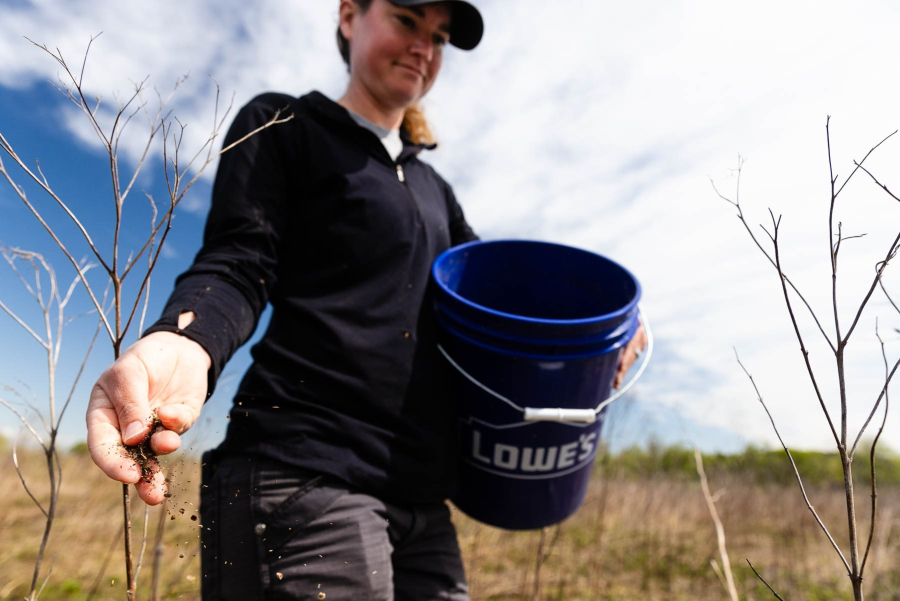
For decades, the call of the Northern bobwhite quail was synonymous with life on the farm along Maryland’s Eastern Shore. The bird’s pleasing chirp, a whistling bob-white that sweeps upward in pitch, would ring across the field during spring breeding season, around the time when farmers planted their crops.
“Quail are very vocal and easy to see when they're around, so people want to hear and see them again,” said Dan Small, coordinator of the Natural Lands Project at Washington College.
Through the Natural Lands Project, which is run out of Washington College’s Center for Environment & Society, Small is working with public and private landowners to make room for grassland birds like the bobwhite quail. Unlike birds that prefer to live in dense forests or along shorelines, species such as quail, field sparrows and golden winged warblers require early successional habitat. This is essentially meadows and field where young trees, shrubs and other plants grow. The edges of forests are also preferred by these species, depending on the time of year.
“During the nesting season they want the big open grassland and diverse meadow habitat for nesting. But then in the winter, they want winter cover,” Small said.
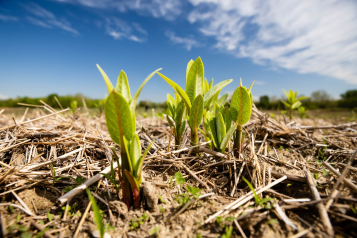
Farms were once the perfect place for successional habitat. Farmers would leave areas at the edge of their farm empty, known as fallow land, where native grasses, shrubs and young trees would grow. But starting in the 1940’s, farmers began planting crops and including pasture all the way to the edge of the property, usually at a forest or riverbank.
Today, Small says that many landowners are encouraged to bring back some of that habitat at the edge of their property when they find out how it benefits bobwhite quail. He’s built much of the Natural Lands Project around the idea that farmers are attached to the nostalgia of grassland birds, which were once abundant on the Eastern Shore.
“Farmers are often willing to make changes to their land, to their properties, to support quail,” Small said.
One of the newer and largest examples of turning farmland into successional habitat can be found at Conquest Preserve in Centreville, Maryland. The 758-acre property is public land, not private, and instead of using the edge of a farm to establish successional plants, the entire farm has been turned into a mosaic of habitats, successional included.
Since 2019, Washington College has been working with Queen Anne’s County on making this transition. The property was gifted to the county decades earlier by the Wilson family, and included a beach and nearly 378 acres of farmland. Washington College converted an initial 212 acres of farmland into natural habitat with support from the Chesapeake and Atlantic Coastal Bays Trust Fund, and they now are helping to manage the remaining farmland for habitat.
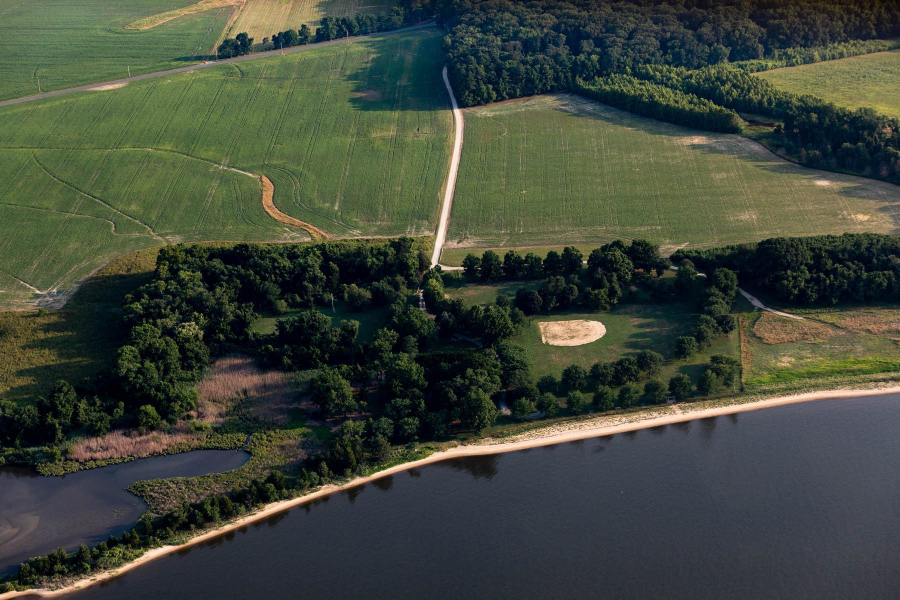
Today, all 758 acres of Conquest Preserve have been turned into wetlands, forest and meadows, the latter two being the habitat most used amongst quail. The native grasses and wildflowers within the meadow, which burst with color during the summer, offer large open areas for the bird to nest, while the edges of the forest is where they can shelter during winter.
“The numbers of quail out here [has] increased each year,” Small said.
But the meadows aren’t just popular among quail. Other grassland birds like grasshopper sparrows, field sparrows, common yellowthroat, blue grosbeaks and indigo buntings also use the habitat. This has made the preserve popular amongst birders.
In October 2023, two rare LeConte’s sparrows arrived at the property and stayed for several weeks. “There were probably 300 birders that came to look for this species,” Small said. One of those birders, so delighted with the park, ended up donating money for wildflower seeds to be spread in the meadow.
According to Small, filling the meadow with diverse plants and wildflowers is key to creating good habitat. “Wildflowers or anything that's producing nectar or pollen are going to attract pollinators or other insects. That in turn provides a food source [that’s] high in protein for grassland birds or birds in general,” Small said.
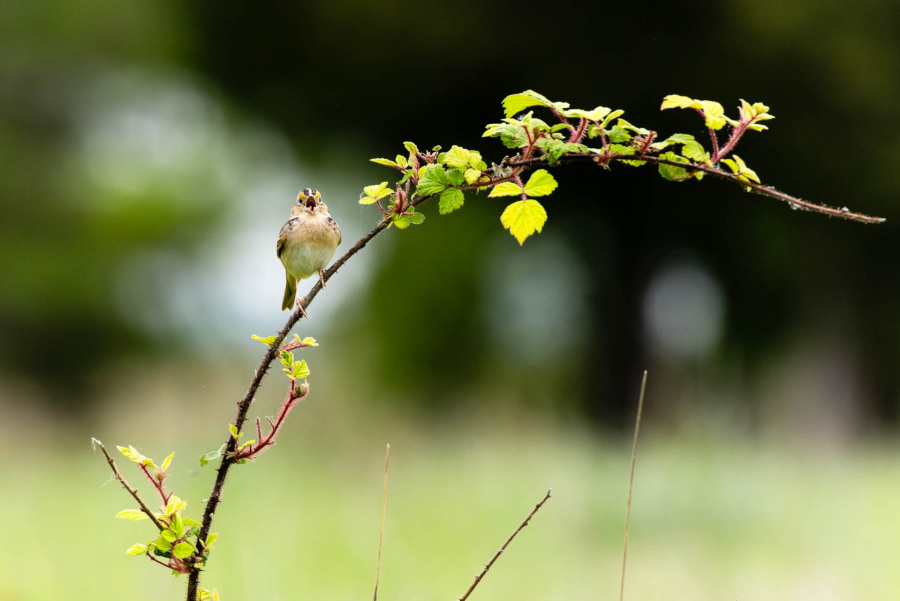
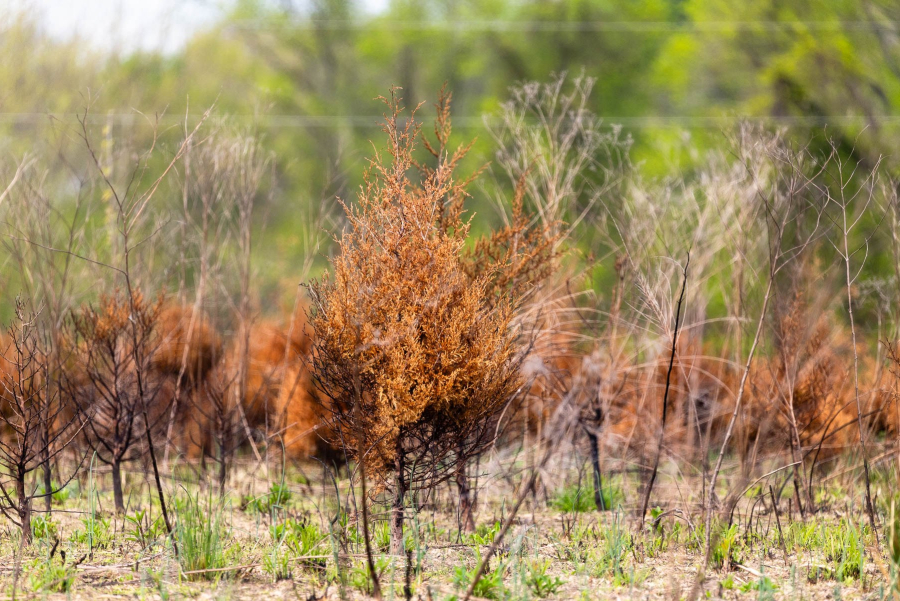
One roadblock is the amount of cool season grasses that continue to grow on the property. Cool season grasses, which are typically found in people’s yards, are often planted because they don’t die over the winter. The downside is that out in the wild, these grasses don’t leave room for a greater diversity of plants to grow in, limiting the amount of insect life.
Warm season grasses on the other hand, which tend to be native to the region, grow in clumps that leave space for wildflowers and other plants to grow in. “Generally, the native grasses facilitate more diversity than these non-native [grasses] tend to,” Small said.
Another challenge is that in order to keep the meadow as early succession habitat, Small and his team have to limit the growth of trees like eastern red cedar that will grow too tall and ruin that low-to-the-ground vegetation. To do so they use controlled burns—a common environmental practice where taller trees and shrubs are burned down. The natural growth cycle of native grasses actually includes fires, so the controlled burns help to reinvigorate the vegetation while making room for more plant diversity.
Every couple of years, the meadows are burned by the Maryland Department of Natural Resources, typically from February to March to leave as much habitat during winter as possible.
“It greens up pretty quickly,” said Kathy Thornton, a field technician who works on the Washington College team. “Some of the wildflowers, just two weeks after it burns, you'll see them starting to grow up.
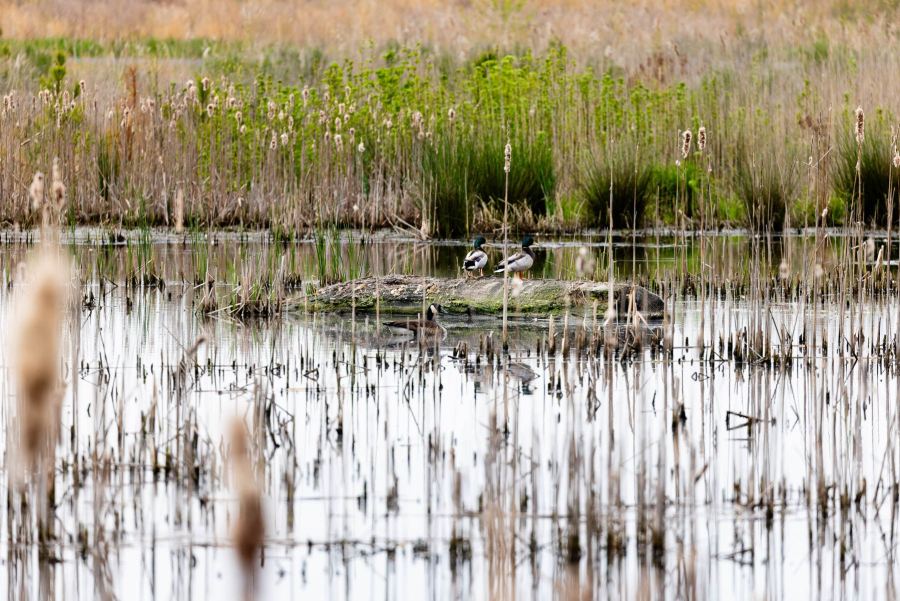
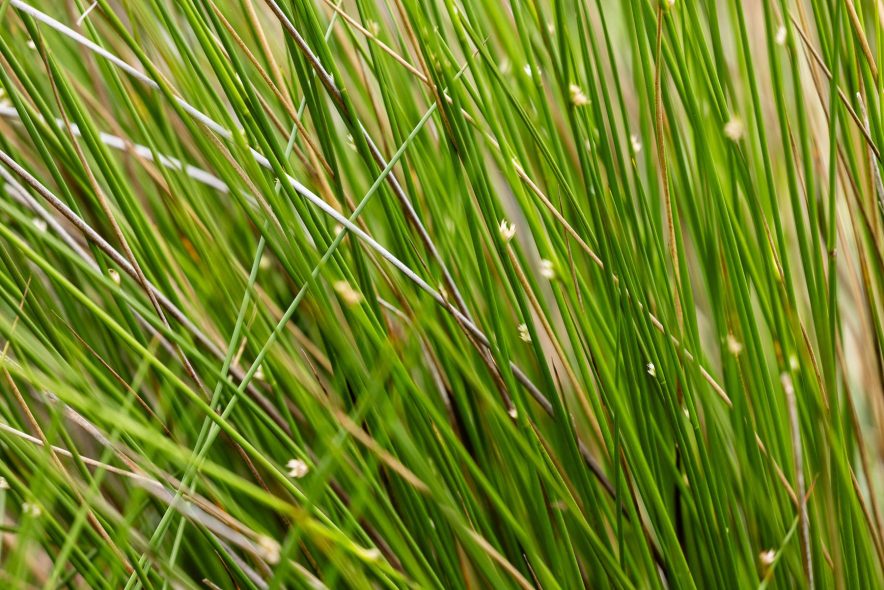
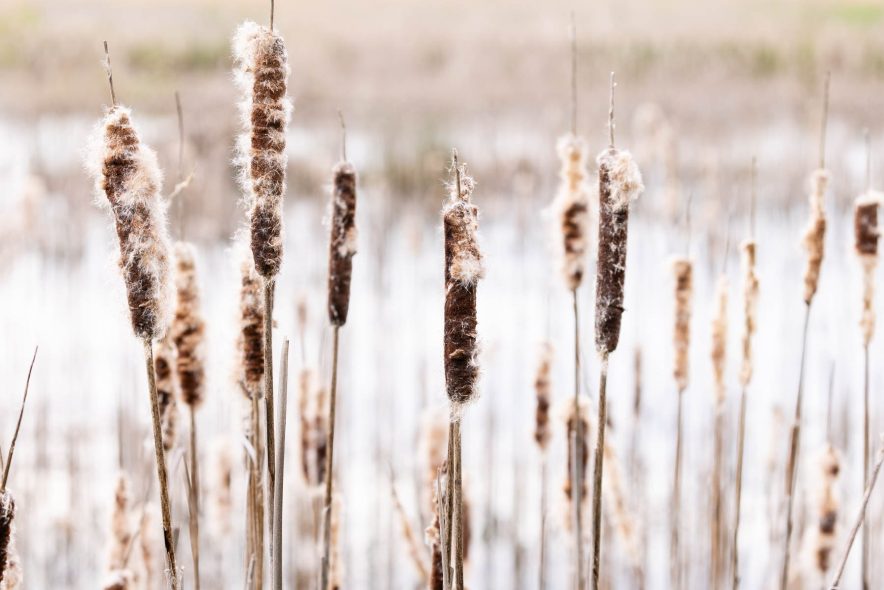
Outside the meadow, Small’s team also manages five wetlands, totaling 32.3 acres, which they restored in 2020 with partners from the U.S. Fish and Wildlife Service. While some songbirds and mammals will visit the wetlands, they’re primarily for the region’s waterfowl, such as geese, wood ducks and teals. According to Small, a handful of waterfowl will use the wetland during the summer for breeding, but over winter, hundreds will stop by as they migrate South.
“The diving ducks are super numerous off the beach in the winter months as well,” Small said.
Bordering the meadows and wetlands are 175 acres of forest, 38 of which were planted by Washington College. The team planted over existing farmland, filling in a large hole in the woods to provide continuous habitat for forest-dwelling species. “The was an idea to help some of those woodland birds, too,” Small said.
The preserve’s latest edition is a five-acre food forest, a space that offers food for not just wildlife, but people as well.
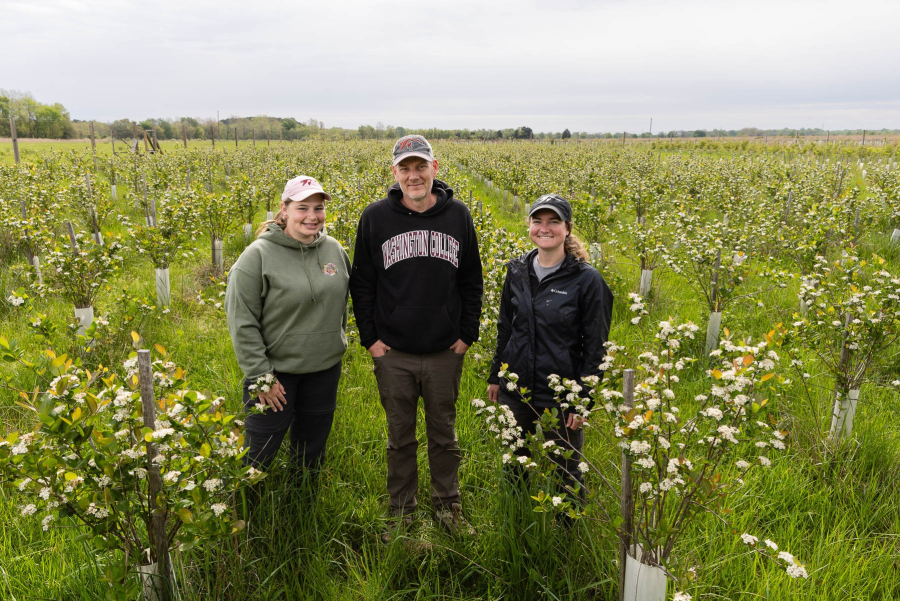
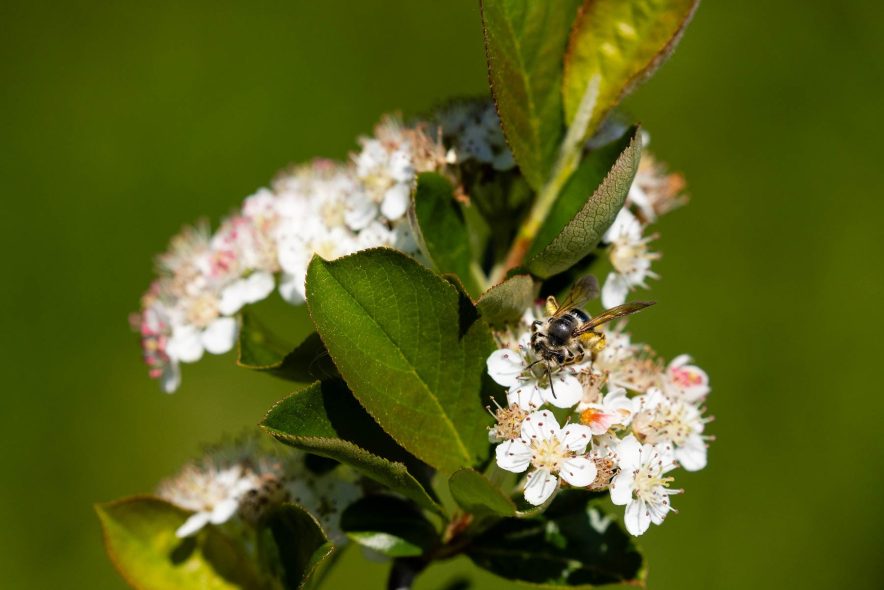
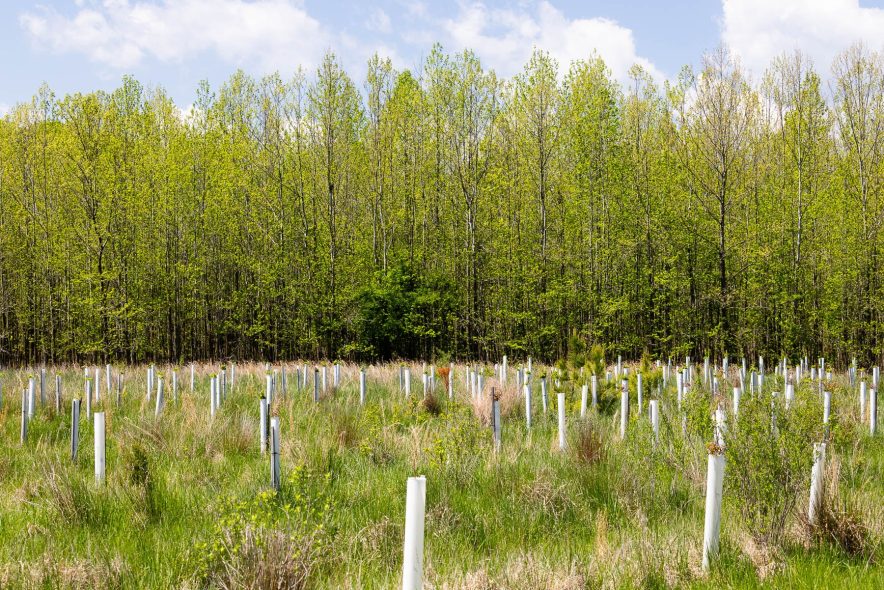
In 2020, the Washington College team began planting rows of fruit-producing trees and shrubs in a fenced area, welcoming the public to come and pick from them. The food forest includes a variety of native plants like American plum, persimmon, paw paw, hazelnut and black chokeberry that start producing in the late spring and summer. Before the fruit comes in, flowers and leaves emerge that are a great source of sustenance for pollinators and invertebrates, which are in turn food for birds. Because these are native plants, they tend to require less water and fertilizer, can offer preferable habitat to other local insects and even produce better quality food for wildlife.
“There are studies [showing that] native fruits have better nutritional content than some of the non native fruits,” said Thornton.
At the end of the day, all of these habitats help keep the two rivers that border the property—the Chester and Corsica rivers—healthy, which means cleaner water flowing to the Chesapeake Bay. Wetlands, meadows and forests soak up stormwater runoff coming from the surrounding area and help keep the beach from eroding. Estimates show that the land practices at Conquest Preserve have resulted in a reduction of 1,094 pounds of nitrogen, 73 pounds of phosphorus and 42,890 pounds of sediment that would otherwise have flowed into the water.
“Our projects serve a dual function where we're helping to improve water quality,” Small said.
The success of Conquest Preserve is being replicated all across the Eastern Shore.
Through the Natural Lands Project, Washington College and other partners are creating meadow and forest habitat on private properties like farms, as well as public areas such as Cypress Branch State Park, Tuckahoe State Park and Sassafras Natural Resource Management Area. At Sassafras alone, Small says his team put in about 160 acres of meadow and 120 acres of trees.
But at Conquest Preserve, the meadow remains the biggest draw for grassland birds and people coming to appreciate them.
“You can't go anywhere else on the Eastern Shore and see this much open grassland habitat,” Small said. “You can go down the lower shore and see open marshland habitat, but not grassland habitat like this.”

Comments
There are no comments.
Thank you!
Your comment has been received. Before it can be published, the comment will be reviewed by our team to ensure it adheres with our rules of engagement.
Back to recent stories